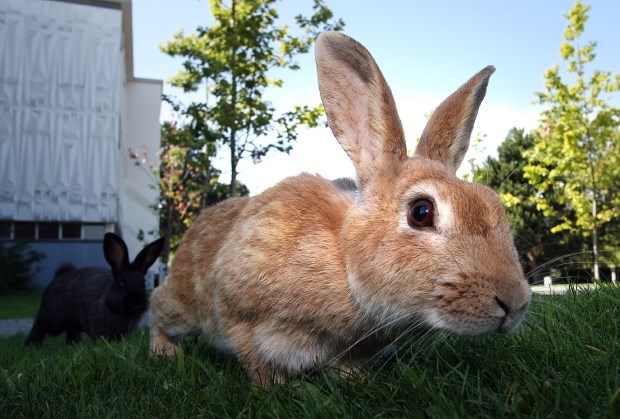Rabbits found at the University of Victoria after Feb. 28 will be killed under a new, get-tough plan for a bunny-free campus.
The trap-and-kill policy is part of UVics decision to clear all remaining rabbits off campus and send them to sanctuaries. It is a shift from the original management plan of allowing about 200 rabbits to live inside the Ring Road.
It was reported last week that the death-sentence clause was under consideration. Its introduction is aimed at dissuading rabbit owners from dumping pets at UVic once the final 50 or 60 rabbits are moved, said Tom Smith, UVic facilities management director.
While UVic is willing to dedicate some resources to rabbit removal, it is unrealistic for the university to divert funding to this task in perpetuity, he said.
People are apparently still dumping unwanted pets on campus as several rabbits captured in the past two months had recently been sterilized, Smith said.
So far, 823 feral rabbits have been trapped and sent to sanctuaries. About 100 were put down shortly before the sanctuary program began, an unknown number have been scooped up by members of the public even though provincial rules forbid private adoptions of feral rabbits and others have been killed by birds of prey.
We are aware we have owls that come and winter here. I guess were going to have some hungry owls now, Smith said.
When the campaign to clear the campus of rabbits started almost two years ago, because of damage to landscaping and sports fields, it was estimated there were between 1,400 and 1,600 animals at the university and numbers have been reduced more quickly than anticipated, Smith said.
The remaining rabbits are slated to go to a sanctuary in Coombs.
However, people should stop feeding those rabbits, Smith said. If they feed them they are less likely to be captured in February and they dont want to be around in March, he said.
There was a mixed reaction from rabbit rescuers. Susan Vickery, who has more than 550 UVic rabbits at her Coombs sanctuary, said: Its a really difficult position for them to be in. You cant encourage [UVic] being used as a dumping grounds, so there has to be a hard line.
I dont like it, but I dont think the onus should be on the university. They have done their bit and they have to put their foot down.
But Laura-Leah Shaw, who has organized four shipments of rabbits to a sanctuary in Texas, said the university will be breaking provincial laws if it immediately kills rabbits dumped on campus.
Rabbits are not deemed to be wildlife until they have been free-roaming for 30 days, so the university wouldnt have the right to kill rabbits within that 30-day window and, surely, within that 30-day window, they could phone one of us to have them picked up, she said.
One point of agreement is that local municipalities should ban the sale of unsterilized rabbits.
We know the cycle and we know whats needed to break that cycle, Vickery said.
It has to be cut off at the source. Its not a hard call. They have the support of the B.C. SPCA and just about everyone else except owners of pet stores.
